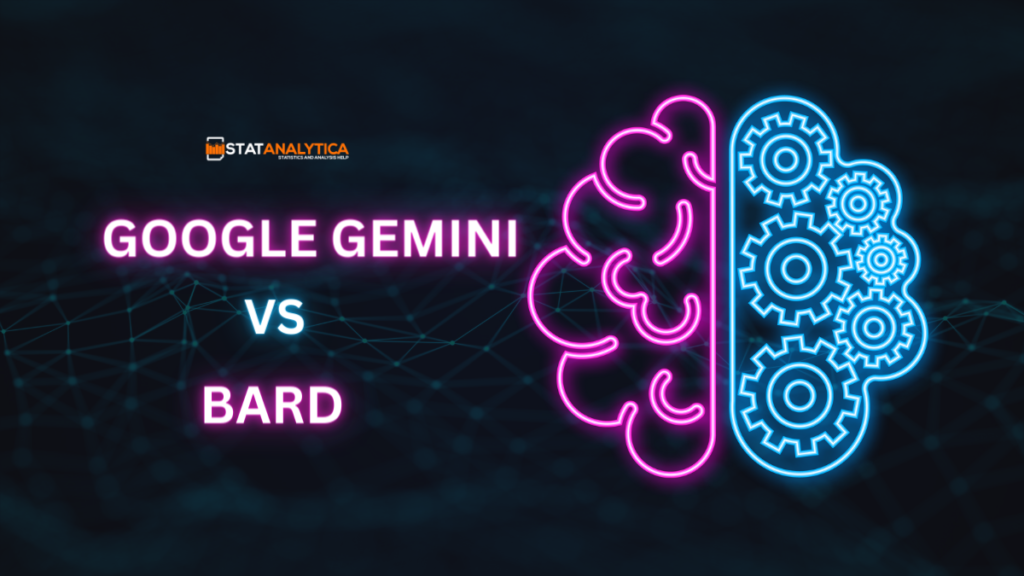In the world of online advertising, choosing the right platform can make a huge difference in reaching your target audience effectively. Two popular options are Google Gemini and Bard. Google Gemini is a versatile advertising platform offered by Google, while Bard is another emerging platform gaining attention. In this blog, we’ll dive into the features, strengths, and weaknesses of both platforms to help you decide which one suits your needs best. Let’s check Google Gemini vs Bard: which is better for you?
All About Google Gemini
Table of Contents
Definition and Background
Google Gemini is an advertising platform provided by Google that allows advertisers to reach their target audience across various Google properties, including search, display, and YouTube. It offers a range of targeting options and ad formats to help advertisers achieve their marketing goals.
Features and Functionalities
- Targeting options: Google Gemini provides advanced targeting options based on demographics, interests, and behavior, allowing advertisers to tailor their ads to specific audience segments.
- Ad formats: Gemini supports various ad formats, including text ads, display ads, video ads, and app install ads, giving advertisers flexibility in creating engaging campaigns.
- Performance tracking: With built-in analytics tools, advertisers can track the performance of their campaigns in real-time, allowing them to optimize their strategies for better results.
Target Audience and Use Cases
Google Gemini is suitable for businesses of all sizes looking to reach their target audience across different channels. It’s particularly beneficial for advertisers looking to leverage the vast reach of Google’s platforms to increase brand awareness and drive conversions.
Strengths
- Extensive reach: Google Gemini allows advertisers to reach billions of users across Google’s network, including search, display, and YouTube.
- Advanced targeting: The platform offers advanced targeting options, enabling advertisers to reach specific audience segments based on their interests and behavior.
- Robust analytics: Google Gemini provides comprehensive analytics tools to track the performance of ad campaigns and make data-driven decisions for optimization.
Weaknesses
- Competition: Due to its popularity, Google Gemini can be highly competitive, making it challenging for small businesses with limited budgets to stand out.
- Complexity: The platform’s advanced features and functionalities may be overwhelming for beginners, requiring time and effort to fully grasp.
All About Bard
Definition and Background
Bard is a relatively new advertising platform that aims to provide advertisers with an alternative to traditional advertising channels. It offers a range of targeting options and ad formats to help advertisers reach their target audience effectively.
Features and Functionalities
- Targeting options: Bard offers advanced targeting options similar to Google Gemini, allowing advertisers to reach specific audience segments based on demographics, interests, and behavior.
- Ad formats: The platform supports various ad formats, including text ads, display ads, and video ads, giving advertisers flexibility in creating compelling campaigns.
- Performance tracking: With built-in analytics tools and access options like the Gemini API, advertisers can track the performance of their campaigns in real-time, allowing them to optimize their strategies for better results.
Target Audience and Use Cases
Bard is suitable for businesses looking for an alternative to traditional advertising channels
Strengths
- Niche audience targeting: Bard allows advertisers to reach niche audience segments that may be overlooked by larger platforms like Google.
- Cost-effective: Due to lower competition, advertising on Bard may be more cost-effective for advertisers, especially those with limited budgets.
- User-friendly interface: Bard’s intuitive interface makes it easy for advertisers to create and manage ad campaigns without requiring extensive technical knowledge.
Weaknesses
- Limited reach: Compared to Google Gemini, Bard may have a smaller audience reach, limiting the potential exposure for advertisers.
- Limited resources: As a newer platform, Bard may have fewer resources and support options available compared to established platforms like Google.
Comparison between Google Gemini vs Bard
Now, let’s compare Google Gemini and Bard based on several key factors:
| Factor | Google Gemini | Bard |
| User Interface | Advanced, may be overwhelming for beginners | Intuitive and user-friendly, suitable for beginners |
| Performance Metrics | Comprehensive analytics tools for tracking performance | Analytics tools available but may be less robust |
| Integration with Platforms | Seamless integration with Google’s network | Limited integration with other platforms |
| Customization Options | Highly customizable ad formats and targeting options | Customization options available but may be more limited |
| Pricing | Competitive pricing, may be costly for certain keywords | Generally more cost-effective, especially for niche ads |
| Support and Resources | Extensive support resources available from Google | Limited support resources compared to larger platforms |
Why Did Google Change Bard To Gemini?
Google changed Bard to Gemini as part of its efforts to enhance its AI capabilities and provide a more advanced, versatile platform. This rebranding and update signifies a shift towards integrating cutting-edge AI technologies and expanding the functionalities offered to users. Here are some key reasons behind this change:
- Technological Advancement: Gemini represents an evolution in Google’s AI technology, aiming to provide more sophisticated and powerful tools compared to Bard. This upgrade likely includes improved machine learning algorithms, better natural language processing, and more robust data analysis capabilities.
- Unified Branding: The name “Gemini” aligns with Google’s broader branding strategy. It conveys a sense of duality and versatility, suggesting that the platform can handle multiple tasks and integrate various functionalities seamlessly.
- Expanded Features: By rebranding to Gemini, Google might be introducing new features and enhancements that go beyond what Bard offered. This could include better integration with other Google services, an enhanced user interface, and more customizable options for users.
- Market Differentiation: As competition in the AI and advertising space intensifies, rebranding to Gemini helps Google differentiate its product from competitors. It signals a new phase of innovation and commitment to providing top-tier AI solutions.
- User Feedback and Improvement: The transition from Bard to Gemini likely incorporates feedback from users, addressing limitations and adding new capabilities to meet evolving needs and preferences.
Conclusion
In conclusion (Google Gemini vs Bard), both Google Gemini and Bard offer unique features and strengths for advertisers looking to reach their target audience effectively. While Google Gemini provides extensive reach and advanced targeting options, Bard offers a cost-effective alternative with niche audience targeting capabilities.
Ultimately, the choice between the two platforms depends on your specific needs, objectives, and budget. Consider experimenting with both platforms to determine which one yields the best results for your advertising campaigns.


